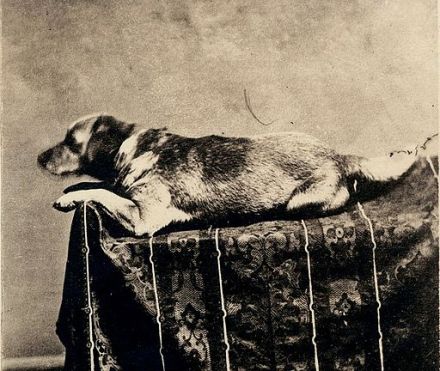Abraham Lincoln’s dog Fido was the first presidential dog to be photographed. Lincoln had the photo taken in 1861 just before he left Springfield, Illinois for his presidential inauguration. He told his sons Tad and Willie that they could take the photo with them to Washington, but not the dog.

Official Portrait of Fido, Abraham Lincoln’s Dog
During his time in Springfield Fido was a great companion to Lincoln. The yellow-and-brown mutt accompanied Lincoln on errands and often waited outside the barbershop for him. Unlike his master, however, Fido wasn’t meant for public life. After Lincoln’s presidential nomination, local politicians came to the house and tried to greet Fido, who retreated under the family sofa. Fido also was less than enthused about the fireworks and cannons going off when his master won the election.
Mary Lincoln was not a big fan of dogs and she was probably happy not to have to clean up after Fido anymore. Lincoln, however, loved dogs and made sure that Fido had a good home. Lincoln gave the dog to the Roll family who were friends and neighbors of the Lincolns and their children.
Before giving away his pet, Lincoln gave the Rolls strict instructions about Fido’s care. For example, Lincoln insisted that Fido never be punished for coming inside with muddy paws. He also wanted the dog to be allowed in the dining room where he could beg for table scraps. The Rolls were also given the Lincoln family sofa to make Fido feel more at home. It was his favorite place to sleep. Finally, the Rolls promised to give the dog back when the Lincolns returned to Springfield.
Fido was never reunited with his master, though he did watch the funeral procession in Springfield after Lincoln’s assassination. Several months later Fido ran away from the Roll’s home. John Roll wrote, “The dog in a playful manner put his dirty paws upon a drunken man sitting on the street curbing. In his drunken rage the man thrust a knife into the body of poor old Fido. So Fido, just a poor yellow dog was assassinated like his illustrious master.” The Roll children buried Lincoln’s beloved dog in their yard.

